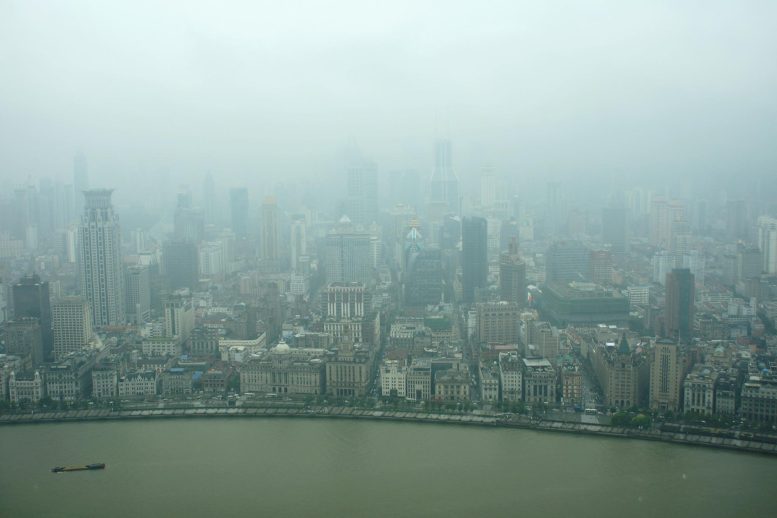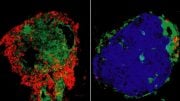
Shanghai shrouded in smog. A study co-authored by Stanford scientists details the role nitrogen has played in China’s pollution problem.
A group of international researchers reveal in a new study that the amount of nitrogen deposited on land and water in China has increased 60 percent from the 1980s to the 2000s.
It’s no secret that China is faced with some of the world’s worst pollution. Until now, however, information on the magnitude, scope, and impacts of a major contributor to that pollution – human-caused nitrogen emissions – was lacking.
A newly published study, co-authored by Stanford Woods Institute biologist Peter Vitousek, reveals that amounts of nitrogen (from industry, cars and fertilizer) deposited on land and water in China by way of rain, dust, and other carriers increased by 60 percent from the 1980s to the 2000s, with profound consequences for the country’s people and ecosystems.
Xuejun Liu and Fusuo Zhang at China Agricultural University in Beijing led the study, which is part of an ongoing collaboration with Stanford aimed at reducing agricultural nutrient pollution while increasing food production in China – a collaboration that includes Vitousek and Pamela Matson, a Stanford Woods Institute senior fellow and dean of the School of Earth Sciences.
The researchers analyzed all available data on bulk nitrogen deposition from monitoring sites throughout China from 1980 to 2010.
During the past 30 years, China has become by far the largest creator and emitter of nitrogen globally. The country’s use of nitrogen as a fertilizer increased about threefold from the 1980s to 2000s, while livestock numbers and coal combustion increased about fourfold, and the number of automobiles about twentyfold (all of these activities release reactive nitrogen into the environment).
Increased levels of nitrogen have led to a range of deleterious impacts including decreased air quality, acidification of soil and water, increased greenhouse gas concentrations, and reduced biological diversity.
“All these changes can be linked to a common driving factor: strong economic growth, which has led to continuous increases in agricultural and non-agricultural reactive nitrogen emissions and consequently increased nitrogen deposition,” the study’s authors write.
Researchers found highly significant increases in bulk nitrogen deposition since the 1980s in China’s industrialized North, Southeast and Southwest. Nitrogen levels on the North China Plain are much higher than those observed in any region in the United States and are comparable to the maximum values observed in the United Kingdom and the Netherlands when nitrogen deposition was at its peak in the 1980s.
China’s rapid industrialization and agricultural expansion have led to continuous increases in nitrogen emissions and nitrogen deposition. China’s production and use of nitrogen-based fertilizers is greater than that of the United States and the European Union combined. Because of inefficiencies, more than half of that fertilizer is lost to the environment in gaseous or dissolved forms.
China’s nitrogen deposition problem could be brought under control, the study’s authors state, if the country’s environmental policy focused on improving efficiency in agricultural use of nitrogen and reducing nitrogen emissions from all sources, including industry and transit.
Reference: “Enhanced nitrogen deposition over China” by Xuejun Liu, Ying Zhang, Wenxuan Han, Aohan Tang, Jianlin Shen, Zhenling Cui, Peter Vitousek, Jan Willem Erisman, Keith Goulding, Peter Christie, Andreas Fangmeier and Fusuo Zhang, 20 February 2013, Nature.
DOI: 10.1038/nature11917









China has got to feed its number one highest population in the World. So usage of fertilizers cannot be blamed altogether. USA has got comparatively less number of mouths to feed, but it has to feed its growing number of cars and other industries for electricity with petrol. Thus they will end up emanating higher CO2 and other green house gases in the atmosphere. Both should be tolerated by the less developed and developing nations. At least let them find ways to neutralize these gases and reduce them in the larger interest of mankind. Thank YOu.
The annual increase was 2.4%.